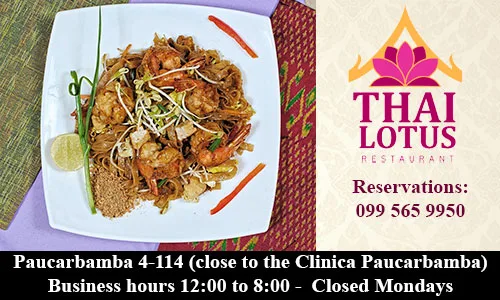Ecuador taught me about the popularity of the Latin Mass in North America
By Christopher Lux
I had never been to a Latin Mass. I had never wanted to go. Though the Latin Mass has been growing in popularity among U.S. and Canadian Catholics, it always puzzled me that anyone would want to go to a Mass they couldn’t understand. That all chang ed for me in Ecuador.
ed for me in Ecuador.
Last year my wife, son, and I moved to Cuenca. We attended Mass said in Spanish, mostly at the cathedral, though we occasionally went to a couple other churches. Every Sunday, we sat surrounded by Ecuadorians, listening to a Mass we didn’t understand — that is, we didn’t understand the language of the Mass. Of course, we knew what was going on because the Order of the Mass is universal.
Our five-year-old complained that he didn’t understand what the priest was saying, and I also had doubts about attending the Spanish Mass. So when we heard about a Mass being said in English, we tried it out. For a few Sundays we went to this Mass. It was a small group of North Americans that had arranged for a Mass to be said in their, and my, language — English hymns, English readings, English homily.

Mass at the new cathedral.
Then one Sunday my wife and I found ourselves trying to decide again where to go for Mass. We weren’t sure which Mass we really wanted. For our son, who hears Spanish all week at school, the choice was obvious: the English Mass. For me, though, I was already missing the Spanish Masses. We outvoted our son and decided against the English.
When we arrived, there were still plenty of places to sit as people stood in the back and along the sides of the church. As Mass started, people were still walking along the sides lighting candles in front of statues of saints over altars. People clapped off beat as the songs were sung. Even the altar servers and priest weren’t together in the clapping.
Children talked during the service and were mildly reprimanded — the soft kind of reprimand, the kind that shows you understand it’s no easy task to be quiet when you’re little. Some children stood on the red, vinyl-covered pews with tears in them; some crawled on the dirty-looking, uncushioned kneelers; others sucked on slices of fruit as they sat next to their parents.

Iglesia San Roque, Cuenca
As the Mass went on in a language we didn’t fully know, I walked to the back for a copy of the weekly readings and gave my donation in exchange. My wife and I tried to follow along with the readings by repeating what we could understand. During the homily, a couple children were on the floor in the aisle next to their parents’ pew. People continued walking around the church, lighting candles and kneeling to pray at the side altars.
At the sign of peace, children ran to the front to have a blessing from the priest. Only half the church went to Communion. There’s no order to the Communion line, as if everyone is eagerly pushing to receive Christ. People turned back to their pews after receiving the Host, bumping into the others who still waited in the “line.”
After Mass, the people flooded out the doors, giving money to beggars on the stairs. Vendors offered Ecuadorian desserts and snacks. Even full meals were being sold from carts. In the churches of El Centro, families cross the street to parks where they eat ice cream on the benches under the trees and visit with friends. Other churches have playgrounds or soccer fields where children play after Mass.
I realize that this is not the service for everyone. To me, though, it’s beautiful. It’s worth not understanding all the words. I began to understand why some people would prefer to go to a Mass said in Latin in the U.S. I prefer a Mass based on a certain culture and experience that I can’t get in other churches. Some gain more from a service they understand fully. Other Catholics prefer a different kind of Mass for other reasons.

Soccer on the playground after Mass.
But it’s all the Mass. As actor Bill Murray recently said in defense of the Latin Mass, “If you’ve been in the business long enough you know what they mean anyway.” Once you know what’s going on and what’s being said, you don’t need to know the exact translation. The Mass becomes more than just understanding all the words.
The Church offers much more than a common language. A great beauty of the Church is its containment of many backgrounds: patriots and expats; prisoners and police; large families and the unmarried; the unemployed and famous actors; those who prefer the Latin Mass and those who prefer a Mass said in English. What brings us all together is not our language; it’s our Catholicity.
The dedicated group of North American Catholics still gather to worship in their language of choice, English. The service is at San Roque Catholic Church on Loja Avenue just two blocks up from 12 de Abril, every Sunday at 12:30 p.m.
__________
This article originally appeared in The Christian Review.
Christopher Lux lives in Cuenca with his wife and son. He teaches English and writing. Before moving to Ecuador, he worked as a freelance writer. He holds bachelor’s degrees in theology and English from Belmont Abbey College and a master’s in English from the University of North Carolina at Charlotte.


















